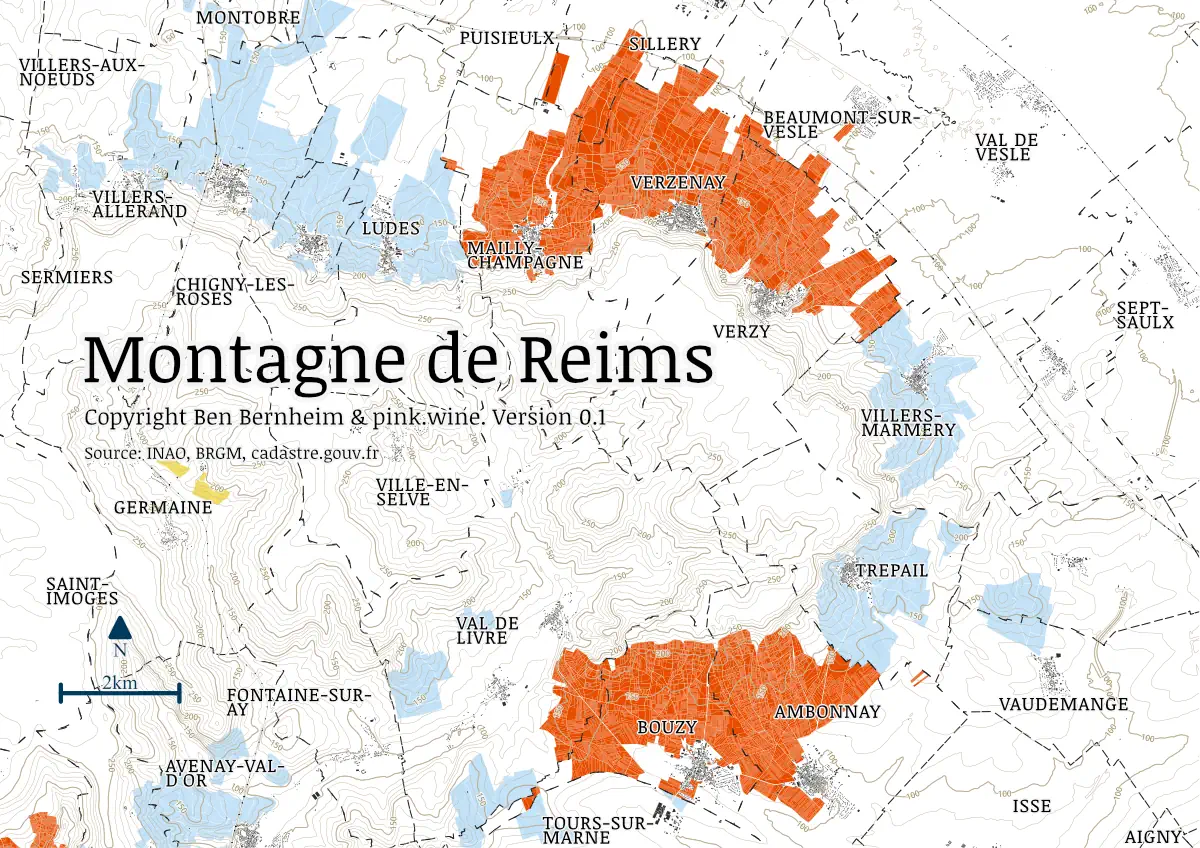The Pinkness of Premium Champagne - part 1
The Pinkness of Bubbles: is premium Champagne the same business as premium rosé?
It sometimes seems that the only answer to "what is your favourite wine?" is "bubbles" - and this is definitely true for us. A bottle of still wine, once opened, will have a few glasses taken out of it before being put to one side. Few wines escape this treatment, except sparklers. The unspoken rule is that a bottle of Champagne will often always be finished in that same sitting - magnums included.
The endless "oh we don't like rosé" or "rosé isn't a real wine" is always magically silenced by a finger pointed at pink Champagne - which (along with blancs de noirs) is just as much a rosé category as the dreaded 'Provence-style'. It's not just sparkling pink: any summertime party will invariably run out of rosé long before the hearty reds are even opened. Our interest, however, lies firmly at the top - just how good can a rosé be, and can it be better than whites and reds?
Parallels are repeatedly made between modern Provençal rosé and Champagne for their business models. Provence rosé is upwards of 50% sold by large négociant maisons, many of which have ties to Champagne. Provence rosé is sold for its lifestyle aspirations rather than murky vinous 'quality', and for the vast majority of production, exact origin and terroir of the grapes is vague at best. The style is imitated across the world as it turns out to be incredibly lucrative. What do rosé and bubbles have in common? Consumers love the wines. As Alexandre Ricard of Pernod-Ricard told us, "rosé and champagne have the same audience and the same networks". It should be noted that in France, 70% of Champagne sales (by volume) are in supermarkets. For Provence rosé, this figure is 'only' 27%, although this figure is constantly rising.
With our love of sparkling wine in mind, we are currently working on ways to explore sparkling rosé - the most exciting (and fastest-growing!) category of them all, the intersection between two independently successful segments. We've been tasting through some stunning pink Champagnes - but one question has lingered. Are they as good - or better - than their white equivalents?
One of the strangest quirks in Champagne is the significant price premium attributed to rosés, even (and especially!) at the top end. WineLister estimates this at an average of 46% price increase for a little bit of pink! This is especially interesting as the lines are more blurred here than elsewhere - what is, after all, the difference between a rosé and a blanc de noir? Can a buyer save money by buying white rather than pink? In the white suggestions we list below, the Drappier Grande Sendrée is about €15 cheaper for the white. Delamotte does not make a vintage rosé, but their NV sells for just as much. Pommery's Cuvée Louise Rosé commands an additional €30 per bottle.
Rosé Champagne [costs] 46% more on average than its white equivalent (an average of £195 for rosé and £134 for white). WineLister
We have always felt that price is not tied solely to quality, but includes an invisible insurance premium. There are some truly great cheap wines out there, but buying from expensive names or appellations comes with a small guarantee - there are far fewer bad expensive wines. The market is more punishing of lacklustre quality than it is in rewarding value for money. This is what makes prestige Champagne worth considering. We have all had that sorely disappointing £6 bottle of fizz that sets the evening off to a bad start, and to an extent we've all had that €25 bottle of Champagne that is just unnecessarily austere and unenjoyable. Past the €45 mark, the number of naff wines drops off a cliff. Past €100, and we can safely say (touch wood!) that we have never had a bottle that wasn't stellar. It's that peace of mind that justifies the price premium. We tasted through a large number of grower Champagnes this year - and were surprised both at how many under-priced value-for-money stunners we came across, but equally many disappointing wines that were at times borderline faulty.
As with still rosé, 'premium' is a hard to define category. Is it based solely on the price? Is a more expensive wine necessarily more premium? Is Vintage Champagne the same thing? Modern rosé all too often relies on packaging and repeatedly calling a wine 'premium' to make it so - what about Champagne?
Despite all these rather ominous question marks, we do have some answers. Much like rosé, a large part of this swing to premium is accompanied by a transition to Vintage wines, or more specific, limited terroirs. Champagne is after all fortunate (or not) to have a slightly more understandable Grand and Premier Cru classification than most regions, and many of these prestige wines make the most of it - although it is by no means a pre-requisite. In fact, some critics have gone so far as to comment on how many modern premium Champagnes are true to their blend roots.
The antithesis of a single-vineyard wine, the 'super blend' is a non-vintage prestige cuvée, built on a profound depth of reserve vintages. Decanter
Terroir is further complicated by the distinction between négociant and récoltant: those who buy in the grapes, and those who grow them themselves. Even for the large Champagne or rosé houses, with their millions of bottles sourced from 'selected partners', this line is blurred by the top cuvées, which are almost always grower wines. This is as true in Champagne as it is for Provence rosé. In a market where most of the money is in inexpensive négociant wines, the top end is clearly récoltant. The wines we have included span everything from 'super-blends' to single-vineyard wines, and Grand Cru single-village wines to regional blends.
Where does vintage come in? The rosé trade is paralysed with fear over vintages, age-worthiness, and leftover stock every autumn. More and more people talk about non-vintage rosé or multi-vintage blends, and mull declaring Vintage wines only for premium cuvées. So far, this Champenois approach has not taken mainstream hold in Provence, but in our opinion it is only a matter of time, especially in the entry-level category. Estimates for the share of Non-Vintage Champagne range from 90 to 98% - does this grant Vintage wines an instant pass into the 'prestige cuvée' category? One comment we hear from small grower Champagne houses is that they do not have the capital to maintain vast reserves of wine to draw from for their NV wines - and therefore rely that bit more on Vintage cuvées.
Just as we make great efforts to find the rosés with the most rosé character, we felt it important to seek out the most white white Champagnes - and what more so than Blancs de Blancs? We're not big fans of the category as a whole, so this was a particularly interesting challenge for us. The choice of a wine should not be made purely by its colour, but rather by a combination of aromatic profiles, flavours, structure, and even winemaking decisions. A Blanc de Blanc should not therefore be simply white, it should taste distinctively different to a rosé or even a Blanc de Noir. Accordingly, the Blancs de Blancs we include in this list, many of which we tasted with Essi Avellan MW, a leading Champagne specialist, and Julia and Bruno Scavo, top international sommeliers, are all chosen in part for how charmingly white they are.
We loved tasting these whites, and are so looking forward to part 2 on how the rosés compare and what to look for from them!
-
 94 Champagne Delamotte Blanc de Blancs (Sparkling white) 2014
94 Champagne Delamotte Blanc de Blancs (Sparkling white) 2014Pale lemon yellow. Rather lovely, gentle smoky oak and lemon meringue pie on the nose. On the palate clean fresh sour lemons, winter jasmine and herbal notes developing an enthusiastic burst of tropical fruit - passion fruit, blood orange and kiwis. Long laser sharp minerality and crisp white citrus freshness. Beautifully elegant, lime juiciness, precision winemaking. The hints of autolysis give hidden cream and vanilla richness and complexity without distracting from the fruit. Really love this! Incredibly vibrant, zesty, austere and fresh just as much as it is rich, ripe, fruity, intense. A bottle just to myself please.
-
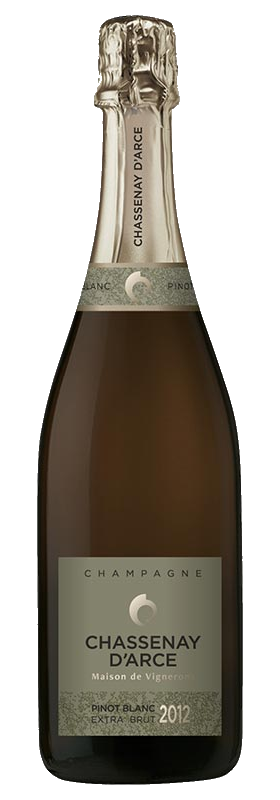 94 Champagne Chassenay d'Arce Pinot Blanc Extra Brut (Sparkling white) 2012
94 Champagne Chassenay d'Arce Pinot Blanc Extra Brut (Sparkling white) 2012Exceptionally perfumed, aromatic, floral on the nose with white blossom and a touch of spring orchards. The floral character continues on to the palate with fresh, perfumed white flowers, ripe orchard fruit, beeswax and creamy white pears, crisp and crunchy apples, apple compote and cloves coming through on the finish. Vibrant chalky, mineral acidity with a hint of white lemons and lime finishing with a twist of salinity. Honeyed notes develop as it warms up in the glass balancing the intensely juicy green apple acidity that is still stunningly ripe, full-bodied and serious. Amazing length, mineral grip and a hint of phenolic tannic weight on the finish. Loving the fragrant delicacy with the power and intensity which makes this a quality Champagne. Elegant and pretty and would never guess that this wine is ten years old! If you didn't think Pinot Blanc belonged in Champagne, try this.
-
 94 Champagne Drappier Grande Sendrée (Sparkling white) 2010
94 Champagne Drappier Grande Sendrée (Sparkling white) 2010Much more oxidative and saline than most of Drappier's range. Grande Sendrée proves even if Champagne can be austere and linear in its youth, the quality vintages age so well they transform into magical wines. Here the acidity continues to be well-defined, with long crisp linear citrus freshness with very ripe, full fruit - a testament to the warmth of the vintage in the South - here from a single parcel in the eastern Côte des Bar. It is worth noting that Drappier delivers stunning value-for-money, as the white is a solid €15 a bottle cheaper than the Grande Sendrée rosé - and even Drappier's Blanc de Blancs at half the price again is a solid choice.
-
 93 Champagne Pommery Cuvée Louise (Sparkling white) 2005
93 Champagne Pommery Cuvée Louise (Sparkling white) 2005Pale yellow gold. Subtly oxidative autolysis on the nose with notes of toasted brioche, rich oxidative ripe fruit, and soft honeyed floral notes, almost honeysuckle and violets, shifting increasingly from floral and herbal to toasty as it opens up. On the palate, first impressions are that the wine is soft and mellow, but firm white citrus and white mineral notes carry the wine through with great length. Showing some age, the acidity is starting to mellow and integrate, with a fine chalky texture and hints of darker blue floral notes coming through on the mid-palate. Loving the progression from smooth easy drinking to something quite weighty and complex. This wine is bold, rich and concentrated, but also restrained with lovely intensity, hints of herb garden and slight pepperiness on the finish. Intensity defines the wine, giving it an amazing gastronomic potential, showing maturity, but certainly not 17 years! Champagne at its best.
-
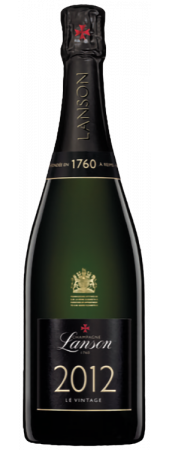 93 Champagne Lanson Le Vintage (Sparkling white) 2012
93 Champagne Lanson Le Vintage (Sparkling white) 2012Soft gold yellow. Strong autolysis ripe, slightly oxidative apple, quince, and hints of peachy tropical richness and coconut on the nose. On the palate lovely rich soft fruit and a bready yeasty character continues - more sourdough than fresh baguette, with austere lime zest elegance. Long length, amazingly youthful fruit and vibrant acidity for a wine which is also showing some age. Weighty and more gastronomic in style with some pithy phenolics and salinity coming through on the finish gently supplemented by a creamy bready leesiness. Both young and old at the same time. Looong length which just keeps giving lime, grapefruit, saline and white minerality. Beautiful concentration that combines elegant freshness, good acidity with nice fruit and good ripeness. Feels very grown-up and well thought-out, very international and worthy of a €60+ premium vintage cuvée.
-
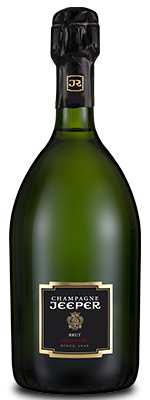 93 Champagne Jeeper Champagne Brut Grand Cru (Sparkling white) NV
93 Champagne Jeeper Champagne Brut Grand Cru (Sparkling white) NVPale lemon. Aromas of brioche, creamy rich, spice and butter with hints of salted caramel, slightly bruised apples and waxy pears with hints of white nuts. Intensely creamy, ripe, rich fruit on the palate - subtle hints of quince, more spice, creamy and silky texture. Elegant acidity keeps everything in check, really fine and well-balanced. Fine elegant fizz balancing the fine elegant fruit. A beautifully integrated blend of apple compote, crisp Nashi pears, creamy freshness with honeyed floral notes and a whisper of shortbread biscuits. Lasting elegant buttery finish, lifted by subtle chalky minerality and lacy Sorrento lemon acidity. Delicate but powerful, pretty and sublimely charming. Long length and ultimately very drinkable although, surprisingly, after breathing it tightens up - becoming more direct, linear, crisp, mineral and firmer.
-
 93 Champagne Palmer Amazone de Palmer (Sparkling white) NV
93 Champagne Palmer Amazone de Palmer (Sparkling white) NVComplex Champagne often comes with complex methodology. Palmer's Amazone de Palmer is made even less frequently than many Vintage wines, with a release every 5 or 6 years. This wine was made with an almost equal blend of top quality Chardonnay and Pinot Noir from the Montagne de Reims villages of Trepail, Villers Marmery (for the Chard), Mailly and Verzenay (for the PN) and a blend of wines from 2012, 2010 and 2009 as well as a Solera Chardonnay followed by 10 years ageing on the lees. Unsurprisingly the wine is full bodied, rich and yeasty, its richness balanced with fine, linear, chalky acidity and long fresh white citrus fruit. Really rather stunning - but the Extra Reserve at a quarter of the price is an equally outstanding recommendation.
-
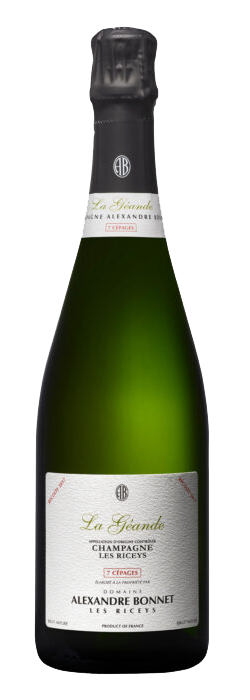 92 Champagne Alexandre Bonnet Les Riceys La Géande 7 Cépages (Sparkling white) 2018
92 Champagne Alexandre Bonnet Les Riceys La Géande 7 Cépages (Sparkling white) 2018Pale lime yellow. Neutral, slightly oaky on the nose. Rather beautiful floral waxy, zesty. Limes, green apples. Lovely, elegant freshness on the palate - ethereal, lacy, fresh but with some gorgeous weight, chalky phenolics, and just enough green and barely ripe fruit to keep things interesting. Mouth-watering salinity and almost grippy phenolics with sour grapefruit pith. Long, clean, fresh, elegant with a very firm structure and an almost gastronomic edge - in line with some of the more severe Chablis. Almost mouth puckering laser sharp on the finish. Would absolutely kill for this with a light lunch (sardines on baguette?) Elegant, delicate, fresh, clean, awfully pretty. Intense rather than ripe.
-
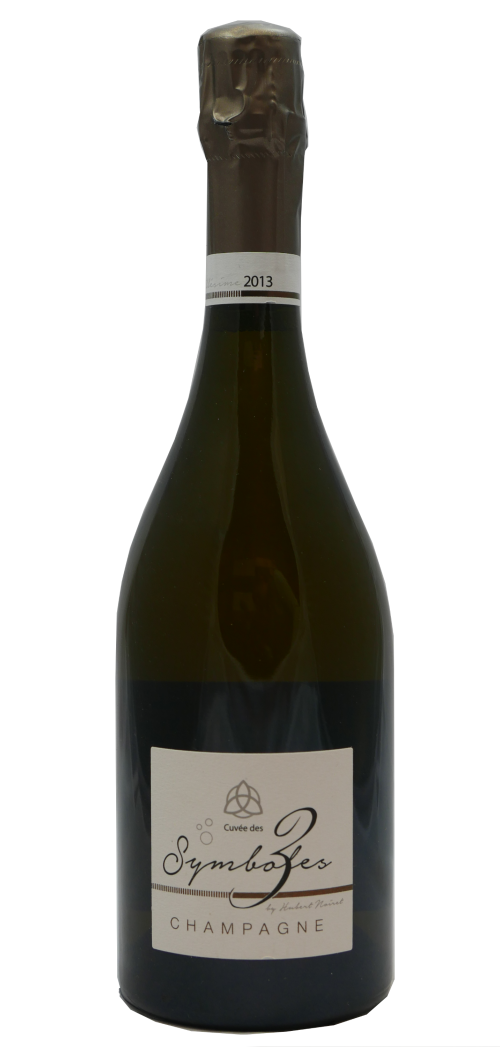 92 Hubert Noiret Cuvée des 3 Symboles (Sparkling white) 2013
92 Hubert Noiret Cuvée des 3 Symboles (Sparkling white) 2013Golden yellow. Very mature autolysis and oxidative notes on the nose with hints of umami, warm spice, cinnamon, cloves, quince, figs, ripe fruit and lots of red apples. On the palate gorgeously opulent bready notes with ripe peaches, apricots cream and sweet almonds combined with intense freshness, fine white lemon crispness, leafy notes and citrus pith. There is so much richness, typical of the southerly origins of this wine, but the youthful acidity holds the mature fruit together. For lovers of aged champagne, bruised apples and yeasty biscuits - especially at the remarkably affordable price of around €40.
-
92 Le Sousa Cuvée des Caudalies Le Mesnil sur Oger Les Chétillons (Sparkling white) 2012
Golden yellow. Leesy bruised apple aromas with warm spiced vanilla oak, quince, dried apricots, tropical flowers and Sorrento lemons. On the palate, lovely smooth, rich, silky vanilla mouth-coating richness, beautifully spiced and elegant acidity, balanced and exciting. Full bodied ripe apples, orchard fruit, green apples, perfumed florals and aromatic citrus finishing with crisp and crunchy herbal, mouth-watering salinity. Definitely a wine to appreciate slowly - but I will happily finish the bottle.
-
92 Paul Sugot Millésime (Sparkling white) 2008
Darker gold. Honeyed but restrained. Almost savoury yeasty notes. Long length, almost buttery nuts, intense and structured, slightly burnt toast, with lovely weight.
-
92 Perron Beauvineau Cuvée Abraham Vieilles Vignes (Sparkling white) 2004
Toasty, savoury, mineral, some austere, saline, stoney, gastronomic, powerful and a beautiful example of weight and purity
-
92 Noel Bazin La Revelation (Sparkling white) 2017
Deep gold. Savoury twiglets on the nose. Long mineral acidity, austere, hints of grapefruit pith, dark mineral structure. long pristine length, chalky firmness
-
91 Paul Lebrun Cuvée Inspirée par Marie Louise Vintage Blanc de Blancs Grand Cru Cramant (Sparkling white) 2015
Pale lemon. Hints of toasty, smoky oak on the nose with leafy peppery notes. Quite weighty oaked toffee flavours coming through on the palate, balancing the crisp white lemon fruit giving this a big, broad, smooth-talking vanillin richness and hints of exotic fruit. As the wine opens up these sweet tropical notes come more to the fore with ripe pineapple, orange and pomelo acidity. A firm mineral structure, a hint of a whisper of oaked tannins more subtle pepperiness and a hint of cedar phenolics on the finish. Overall neutral elegance with beautifully integrated fruit, acidity and weight. The bubbles are really quite ephemeral, the fruit a pleasing combination of delicacy and structure and a lovely blanc de blancs character.
-
91 Vincent d'Astrée Équinoxe Premier Cru (Sparkling white) 2005
Soft golden lemon yellow. Autolysis with sourdough intensity and beautiful orchard fruit on the nose. Very elegant on the palate, combining that same uber-ripe orchard fruit, dark plum compote, red apples and the fresh crunchiness of black currants and well-integrated phenolic weight following through. Really beautiful lasting acidity and extraction with crisp, clean almost saline, chalky phenolic acidity on the finish with melon sweetness and smoothness rounding up the length. I'm already imagining this with apple crumble and just a hint of custard.
-
90 Champagne Jacquart Villers-Marmery Blanc de Blancs 1er Cru (Sparkling white) 2016
Very pale lemon colour. Creamy, leafy, herbal, floral aromas. almost scented lemons. Crunchy green apples, some pithy apple pip tannins, with lots of lacey white lemon fruit. and white flowers and apple blossom. Long clean and fresh barely ripe acidity and more green apples with a touch of subtly floral gooseberries opening up to some rather lovely perfumed lemons. Very delicate, ephemeral and pretty with some gentle biscuits and white nuts coming though on the finish to give a balanced weight and complexity. Fresh, approachable, elegant, well balanced. Acidity and freshness-dominated.
-
90 Vincent d'Astrée Pierry Premier Cru Brut Millésime Premier Cru (Sparkling white) 2015
Soft pale lemon. Complex aromas of white bread and ripe opulence on the nose - peaches, tropical fruit, red apples, apple blossom and pears. On the palate, rich complexity and nice acidity with apples the dominant fruit: cooking apples, scented russets, autumnal notes with a long fine minerality giving an almost stony structure to the ripe fruit. Very much ripe fruit, roundness and maybe some red apple peel phenolics. Bubbles are very fine, acidity well integrated with a crunchy finish. Would love this this with the sweet nutty rusticity of a roast pumpkin, maybe softened into a risotto. Really lovely and approachable.
-
90 Le Sousa Cuvée des Caudalies Avize Les Pierres Vaudons (Sparkling white) 2012
Darker lemon gold. Complex aromas of spice, fresh bread and butter, honey and cream, floral notes with rich red fruit, cinnamon and cloves. Beautifully rich, aromatic and oaky. On the palate a beautiful balance of acidity, crisp, elegant, delicate and restrained with powerful and concentrated weight or ripe fruit, crunchy green apples and spice and a chalky, citrus, saline finish. A fascinating combination of aromatic intensity with structural elegance and daintiness. There is so much more to this wine that decanting in advance would reveal even more complexity.
-
90 Gosset Celebris (Sparkling white) 2008
Soft lemon yellow with a hint of pink. Classic aromas of brioche, hints of sweetcorn, green apples, apple blossom and bruised apples. On the palate, bruised apples, crisp crunchy saline freshness with some pithy, sour grapefruit ripeness coming through on the finish. Good weight and intensity with rich cooking apple phenolics, a chalky finish and crisp acidity, creating a very classic style and what most people would expect from a champagne.
-
90 Champagne Paul Louis Martin Champagne Extra Brut Grand Cru (Sparkling white) NV
Sweet lime, lemongrass and powdered violets gives a charming ripeness on the nose, accompanied by subtly rich and creamy notes. Unexpectedly, the palate delivers great crispness and even some salty lime austerity on the finish with a maple syrup rich ripeness. Long, fresh, elegant and deceptively delicate – decant to make the most of this wine and let its depth and fruit shine.
